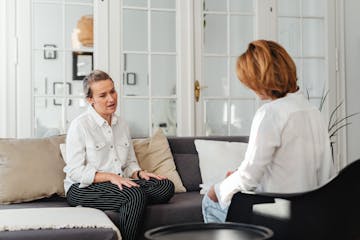Anxiety is one of the most common mental conditions today and can have a significant impact on the daily lives of people who experience it. Fortunately, there are various ways to address and treat anxiety, one of which is through photography as a therapeutic tool.
What is anxiety?
Anxiety is a natural response of the human body to situations of stress, danger or uncertainty. In small doses, anxiety can be beneficial, helping us to be alert and take steps to protect ourselves. However, when anxiety becomes excessive or persistent, it can interfere with our daily activities and affect our quality of life.
Symptoms of anxiety can manifest in a variety of ways, such as nervousness, difficulty concentrating, sleep disturbances, irritability, among others. In more serious cases, anxiety can lead to anxiety disorders, such as generalized anxiety disorder, panic disorder or social phobia.
Therapy through photography
Therapy through photography is a form of art therapy that uses visual images as a means of self-expression and emotional exploration. In the context of anxiety, photography can be a powerful tool to help people identify, express and manage their emotions creatively.
Benefits of photography as a therapeutic tool
Photography as a therapeutic tool offers a number of benefits that can be especially useful for people experiencing anxiety:
- Emotional expression: Photography allows people expressing their emotions nonverbally, which can be more accessible and less threatening than using words.
- Mindfulness: By focusing on creating images, people can practice mindfulness and being present in the moment, which can help reduce anxiety and stress.
- Self-awareness: Photography can be a tool to explore and better understand emotions. own emotions, thoughts and behavioral patterns, which can contribute to personal growth and emotional well-being.
- Empowerment: By creating meaningful and personal images, people can feel empowered and with a greater sense of control over their emotions and experiences.
How to use photography to relieve anxiety
There are different ways that people can use photography as a therapeutic tool to relieve anxiety:
Studies on the effectiveness of photography as therapy for anxiety
Although therapy through photography is a A relatively new practice in the field of mental health, several studies have explored its effectiveness in treating anxiety. A study published in the Journal of Creativity in Mental Health found that participation in a therapeutic photography program was associated with a significant reduction in anxiety levels in participants.
Another study conducted by researchers at the Harvard University showed that photography can have a positive impact on people's mental health, improving their mood, reducing stress and promoting self-expression and creativity.
Recommendations for starting photo therapy
If you are interested in exploring photography as a therapeutic tool to relieve anxiety, here are some recommendations to get started:
- Research specialized therapists: Look for therapists who have experience in therapy through photography and who can guide you in your therapeutic process.
- Experience on your own: It is not necessary to have previous experience in photography to benefit of this practice. Start taking photos of things that catch your attention and reflect on how they make you feel.
- Join photography groups: Participating in photography groups or communities can provide you with support, inspiration and the opportunity to share your creations with others.
- Practice self-compassion: Remember that the therapeutic process through photography can be emotionally challenging. Allow yourself to feel and experience your emotions with compassion and without judgment.
In conclusion, photography can be a valuable therapeutic tool to relieve anxiety and improve emotional well-being. Through creative self-expression, emotional exploration, and connection to the environment, people can use photography to manage their emotions, reduce stress, and promote personal growth. If you are dealing with anxiety, consider exploring photography as a form of therapeutic support and discover the healing power of images.


